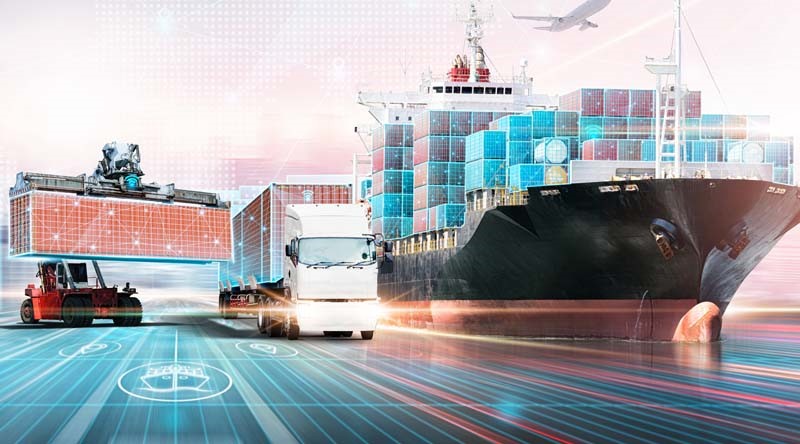Recently NNPC has participated in a seminar discussing the implications for the legal status of electronic Bills of Lading in Rotterdam. During the seminar a presentation was delivered by Karel Maes on the risks involved in the use of electronic Bill of Lading, viewed from a P&I insurance perspective. Among other speakers were stakeholders from various sections of the maritime industry such as BIMCO as well as E-B/L platform and IT service providers.
Throughout the contributions of the participants it was clear that, apart from modernization and following the trend of digitalization, the advantages of using electronic Bills of Lading were generally recognized as follows:
- cost savings by reducing the need for paper documents or logistical process;
- increased speed of transfer of documentation (faster Letter of Credit process);
- reducing the risk of fraud by increasing cyber security (of course provided the e-platform is secure);
- reducing instances where Letters of Indemnity need to be presented where no original (paper) Bill of Lading is present.
However, in order for an electronic document to act as a Bill of Lading “at law”, the electronic document must essentially fulfill three conditions:
- it must act as a receipt for the shipper’s delivery of the cargo to the carrier;
- it must contain and/or evidence the contract of carriage and its terms;
- it must act as document of title to the cargo, establishing the legal rights and liabilities of the holder of the e-Bill of Lading in relation to the cargo
In today’s world it is possible to replicate the functions of the Bill of Lading as (evidence of) the contract of carriage concluded as well as the receipt function as in most jurisdictions nowadays electronic documents are given the same legal a status as paper documents. However, during the last years (even decades) the real challenge has been to ensure that the electronic Bill of Lading is able to fulfill the role as document of title (i.e. not only to serve as a “key to the warehouse”, i.e. entitling only the rightful holder to the delivery of the goods out of the hands of the shipowner, but also allowing transfer of title to a designated other party).
A large portion of the contributions during the seminar revolved around the document of title function of the Bill of Lading and how this could be replicated into electronic form. More specifically the importance was highlighted of the document of title function from a banking or trading perspective, as the parties involved in the Letter of Credit chain must be able to rely on the fact that only the rightful holder of the Bill of Lading is entitled to receive the goods. Only then the Bill of Lading can rightfully act as document of title and/or collateral for banking/Letter of Credit purposes.
At the same time it was also highlighted that from a P&I club perspective it is equally vital that the electronic Bill of Lading used ensures the performance of the three aforementioned functions of a Bill of Lading as they customarily underpin P&I cover (i.e. as a receipt, as a document of title, and as a contract of carriage which incorporates the Hague or Hague‐Visby Rules).
At present few jurisdictions set the conditions for an electronic Bill of Lading to purport the document of title function in a legally valid way as if it were a paper Bill of Lading. Due to the absence of a universal legal framework in which the electronic Bill of Lading is granted the same legal status as the paper version, until now the use of electronic Bill of Ladings has been mostly limited to so-called “walled gardens” or “Club systems”. Through such multi-party contractual agreements, parties subscribe to the use of electronic Bills of Lading by signing up to the terms and conditions of an e-platform. Within these electronic platforms subscribers are able to create and circulate (“transfer”) electronic Bills of Lading among the participants on the basis of a contractual framework pre-agreed. This currently allows the use and transfer of electronic Bills of Lading between “linked” parties, i.e parties that have prior agreed to the terms and conditions of the same e-platform. As was apparent from the group discussion one of the main challenges that needs to be overcome lies in the lack of interoperability, i.e. electronic Bills of Lading cannot (yet) be transferred from one e-platform to another (i.e. from a participant of one e-platform to a participant of another e-platform).
While it was highlighted that at present a number of e-platforms have been classified by the International Group of P&I Clubs as “approved systems” it was highlighted that Members as per the terms of their cover must still obtain prior approval from their individual P&I Club in order not to prejudice their P&I cover.
Last but not least it was highlighted that there are recent legislative initiatives, most recently in the UK (the UK Electronic Trade Documents Act 2023 which came in to effect as of 20 September 2023) which may act as a catalyst for the use of electronic Bills of Lading. In brief, the Act allows that, if he circumstances under the legislation are met, electronic trade documents, including electronic Bills of Lading, are recognized as having the same legal recognition and functionality as their paper counterparts. From a Dutch perspective it was highlighted that recently the legislator had proposed a bill (wetsvoorstel “Wet invoering elektronisch vervoerbestand” ) which, if implemented, should stimulate the use of electronic documentation in the transport sector.
Specifically on the UK Electronic Trade Act 2023 it is expected that this will give rise to case law which will be interesting to follow for the shipping sector and all its stakeholders.
We look forward to keep you informed of further developments via our news updates.

